This article is reposted from the autocarweekly WeChat account.
Author: Hoo
After driving for many years, have you ever realized that headrests are not just for resting your head?
Recently, Li Xiang posted a Weibo that was written in a seemingly decent tone, warning everyone about the significant safety risks of the very common third-party small soft pillows that are installed on car headrests.
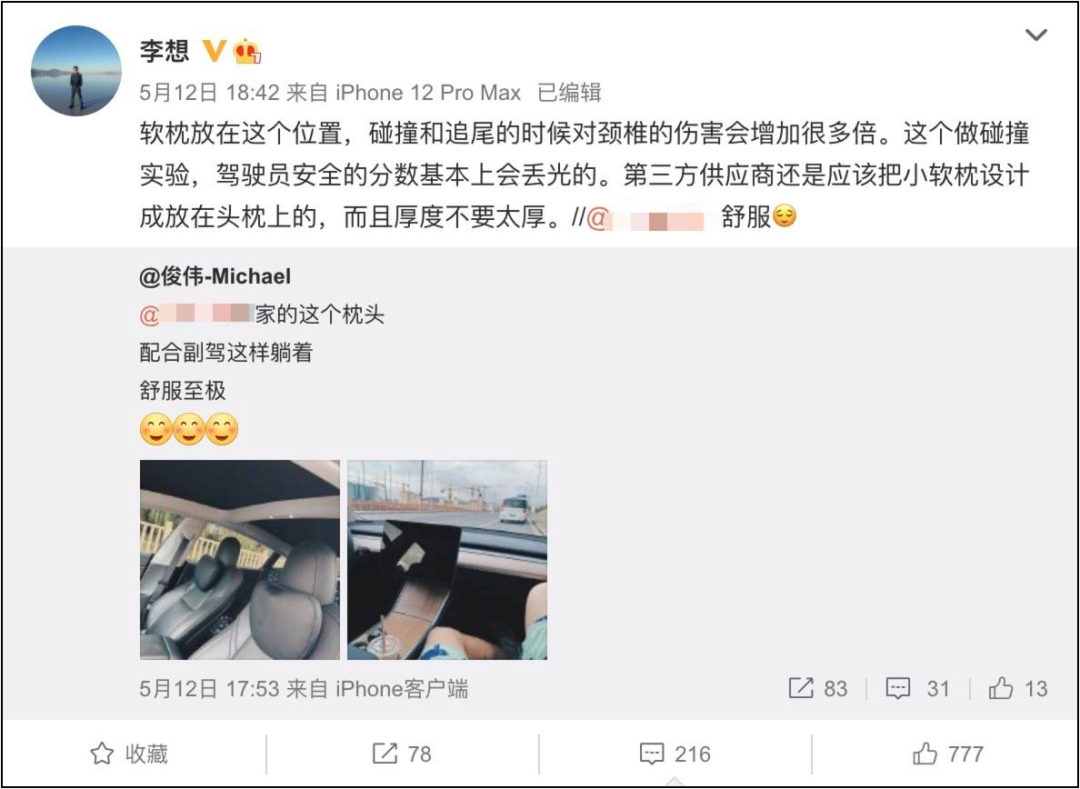
In contrast, the market for automotive aftermarket products is booming, and aftermarket headrest accessories can be seen everywhere on seats of motor vehicles in China. There are classical neck pillows, fashionable memory foam pillows, and additional soft pillows that have become popular with Mercedes-Benz and Maybach. A wide variety of options are available, showcasing the thriving vitality of the market economy.

However, one small question is missing: if putting a neck pillow is so comfortable and original car seats are so uncomfortable, are all interior designers in the world’s top car manufacturers who make millions of dollars dining out?
As I have just mentioned, of course not.
Although headrests are called “pillows”, and the word “rest” is also included in their English name “headrest”, car headrests were never designed for the purpose of giving you a place to lay your head or rest. If you are attentive while looking at the configuration table of a car, you will easily find that the “front and rear headrests” of every brand and model of car are always classified under “safety configurations” rather than comfort configurations. If you have noticed this point, you may have wondered why headrests are ranked alongside three-point safety belts, airbags, ESP, and so on.
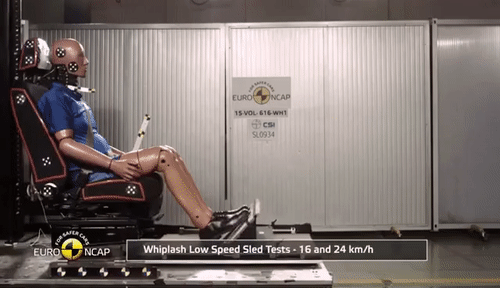
If you pay attention to the IIHS and C-NCAP crash tests, then the 25% offset crash is very familiar, and the results are also obvious at a glance. But when it comes to the rear-end crash test, which may not be clear to the naked eye and has some understanding threshold, and where few contemporary models fail, it is naturally ignored for a long time. People often pay high attention to forward collision, but unintentionally ignore the danger of rear-end collisions.
The so-called whiplash test assesses the ability of the vehicle to reduce the whiplash effect on occupants when the vehicle is rear-ended.The whiplash effect can be roughly divided into three stages. When the vehicle you are riding in is rear-ended by another car, the sudden increase in forward acceleration will cause the backrest to push your naturally curved spine straight, and your head will move upwards and backwards along with the inertia of your body, making your neck bend backwards into an S-shape – until your head hits the headrest and decelerates, pressing against it, which is the second stage. Finally, as the collision is about to end, due to the rebound of the headrest and the inertia of the body, your body has a tendency to move forward, but the torso is restrained by the seat belt, so your head is thrown forward again.
The whole process is like wielding a whip: your torso is the handle, your head is the tip, and your neck is under great pressure.
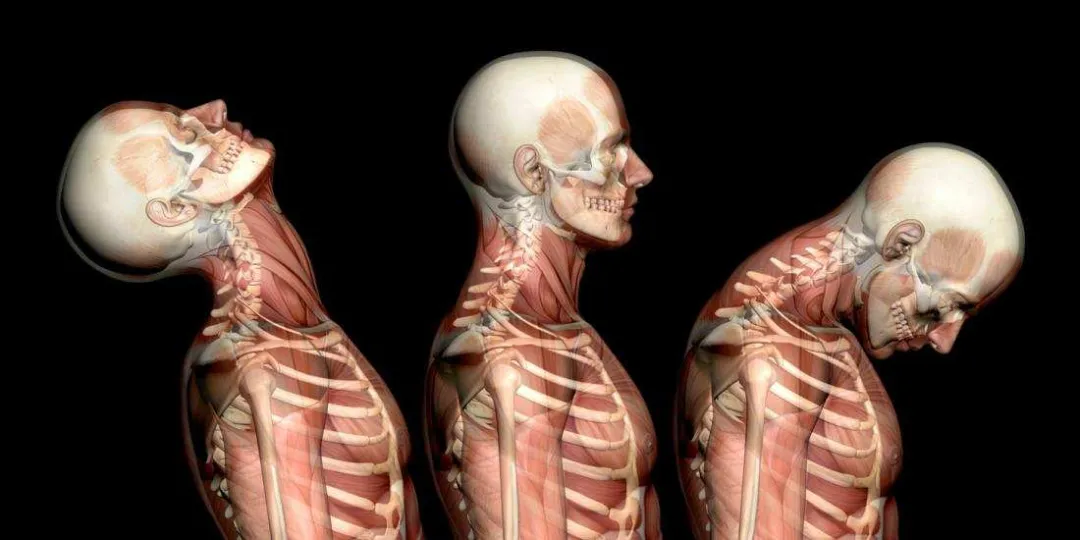
The root cause of the whiplash effect is that the head first accumulates energy backwards and then releases it forwards all at once, causing pressure and injury to the neck.
Do not think that rear-end collisions are not dangerous just because tests such as the IIHS and C-NCAP Whiplash Test are almost easy to pass. It should be noted that the test speed of C-NCAP Whiplash Test is only 16 km/h and the speed range of E-NCAP test is 16-25 km/h. The most severe IIHS test is only 32 km/h. Protecting passenger safety in high-speed rear-end accidents is not an easy task.
To reduce the whiplash effect, first of all, when the head is “thrown” upward and backward in the first stage, it is important to “catch” your head – reducing the amplitude of the backward swing of the head is equivalent to reducing the overall amplitude of the head’s back and forth movements during the whole process.
Using a headrest to limit the backward movement of the head when it is rear-ended (amplitude and speed) is the reason why safety headrests have gradually become standard in all models, regardless of their price or level. In the last century, when automobile safety regulations were not yet perfect, a considerable number of cars were not equipped with headrests at all. For example, the comfortable American luxury car “The Green Book,” that called attention to this issue, also once again proved that headrests have nothing to do with “comfort.”

Now, let’s talk about neck pillows.
It is easy to observe that most car headrests are slightly inclined downwards, which is completely opposite to the human-centered design that puts comfort first: the position of the head needs to be soft and drooping, but there is a hard headrest on top; the back of the neck needs support, but there is nothing there. In safety-first Volvo models, the design of the headrest is very obvious.
As for the neck pillow, the original equipment was uncomfortable, so people had needs, and thus a wide variety of aftermarket neck pillows were created.
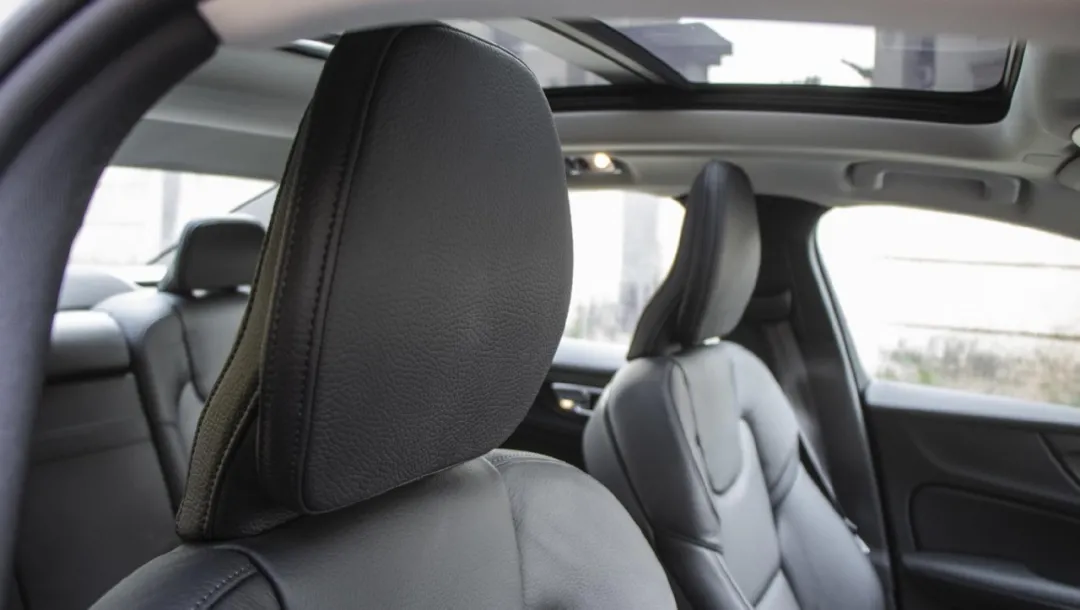
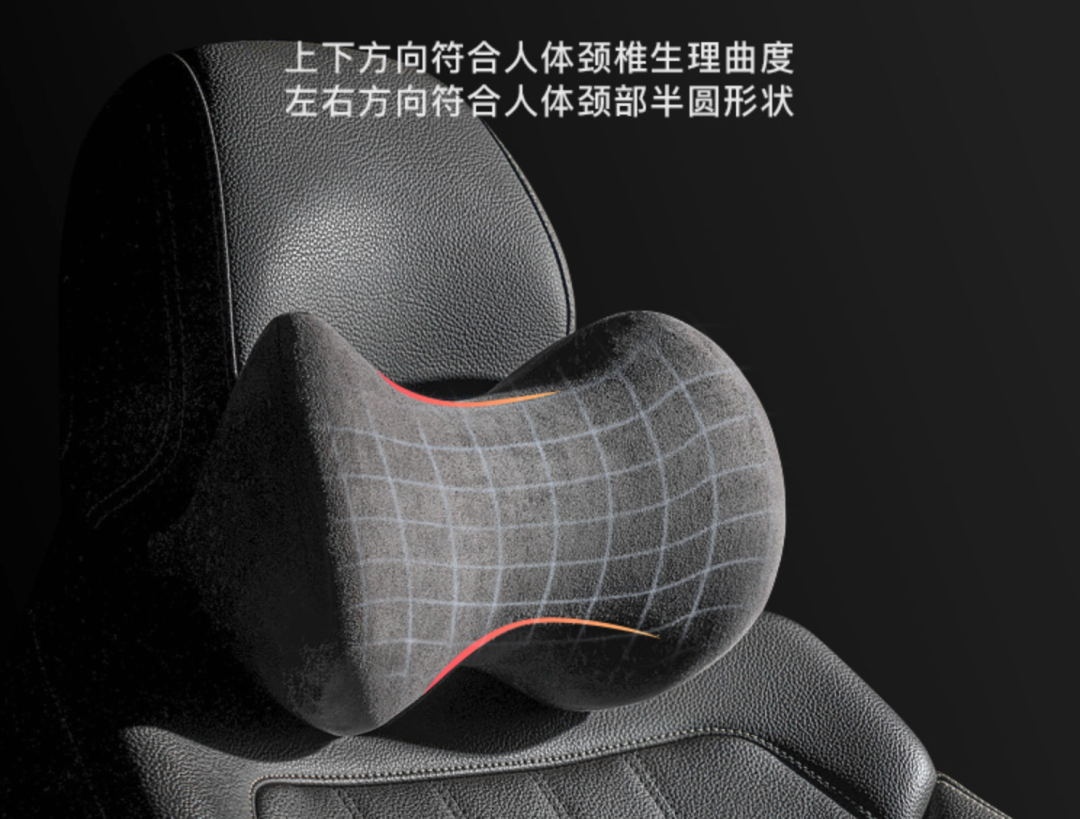
The bug of neck pillow is that it totally ruins and even reverses the original downward sloping design of the original car safety headrest. The effect of restraining the backward and upward movement of the head has disappeared, and it makes the head more likely to break away from the restraint of the headrest upward and backward. Therefore, even the physically normal people on Earth know that the head needs support and the neck needs padding, and car manufacturers cannot make such a “sugar-coated bomb” on the car.
After all, once an accident happens, the aftermarket can easily escape and the OEMs cannot escape.
The previous-generation Mercedes-Maybach S-Class used additional soft pillows on the headrests, which started a small trend among other OEMs and the aftermarket. The BMW 3 Series long-wheelbase version manufactured in China has added similar configurations to the rear seats. However, if carefully observed, both Mercedes-Benz and BMW’s original factory additional soft pillows are placed on the surface of the headrests, and will never extend downwards to the neck. Their essence is to seek potential improvements in comfort, while ensuring that the safety function of the headrest is not lost. As for the many third-party aftermarket soft pillows, they completely ignore these rules and blatantly guide consumers to install them on their necks.
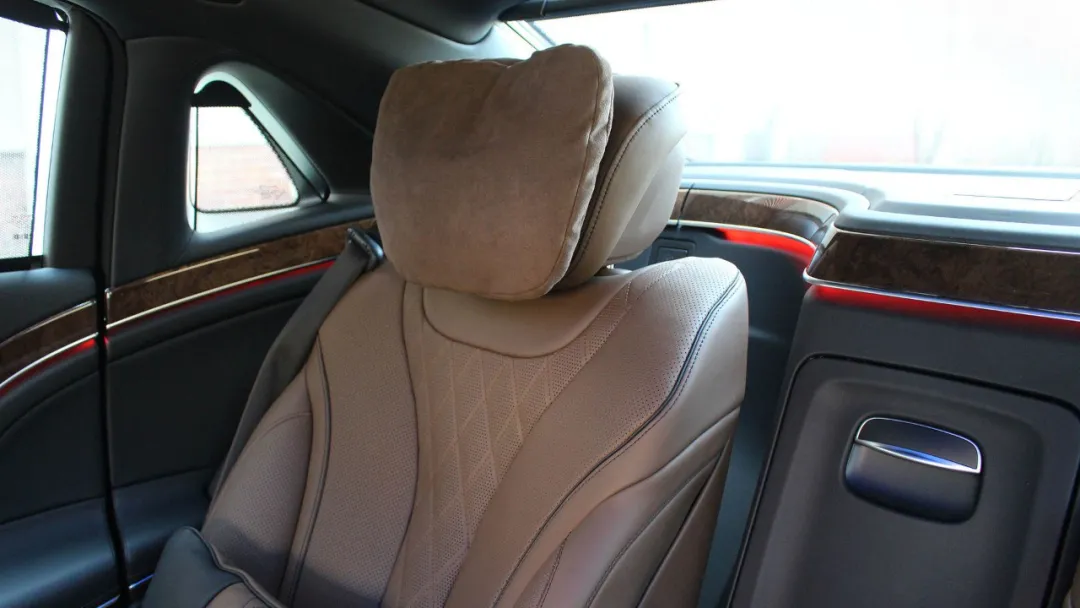
Expanding a bit. All driving basic courses will tell you that the correct sitting posture should have the top of your head at least level with the top of the headrest, so that the headrest can suppress the upward and backward movement of the head in the event of a rear-end collision. If the headrest is positioned too low, the head is prone to pass over the headrest and then swing backward, rendering the safety function of the headrest ineffective.
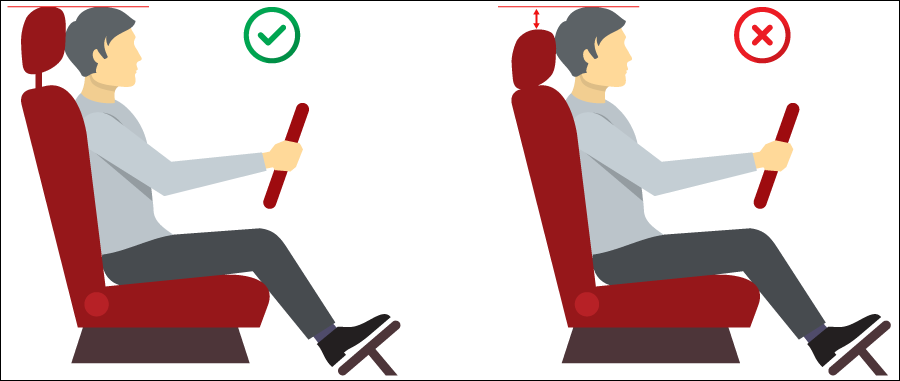
Today, fixed safety headrests have become standard equipment, and more manufacturers will add active anti-rear-end collision systems to vehicles. The most common, of course, is active headrests.
This is the active headrest of the previous generation Mercedes-Benz C-Class (W204). This type of headrest structure has long been common on luxury cars such as Mercedes-Benz and BMW in previous years:
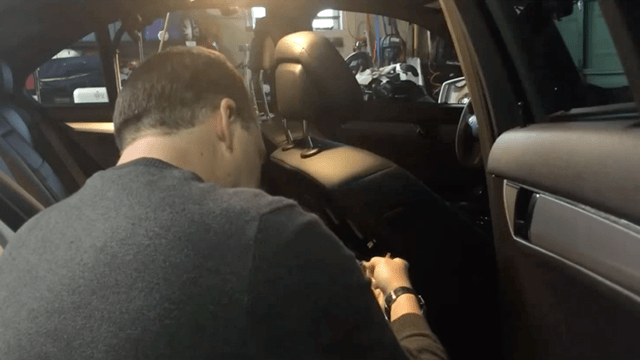
This is the active headrest of the Hyundai Group, which automatically pops out the headrest bracket to support the head in advance to reduce the amount of head swing backward in the event of a collision:
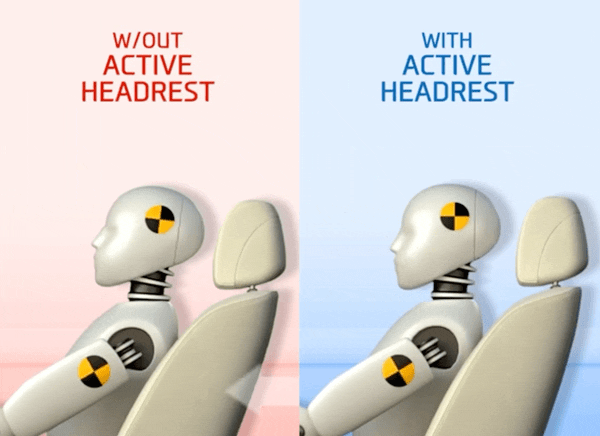
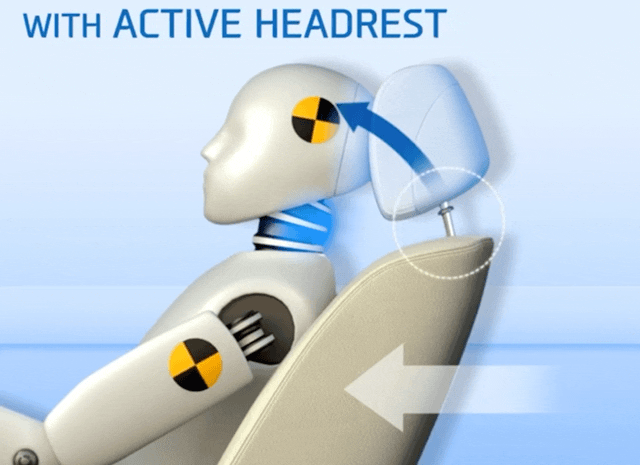
Toyota’s Active Safety Headrest System is equipped with pressure sensing components inside the seat back. When the human body is pushed backward by a rear-end collision, the component triggers the headrest to pop out from the top, moving the headrest forward by 25mm and upward by 30mm, to support the head more quickly and effectively. Toyota believes that this system can reduce neck injury by 10% to 20%.
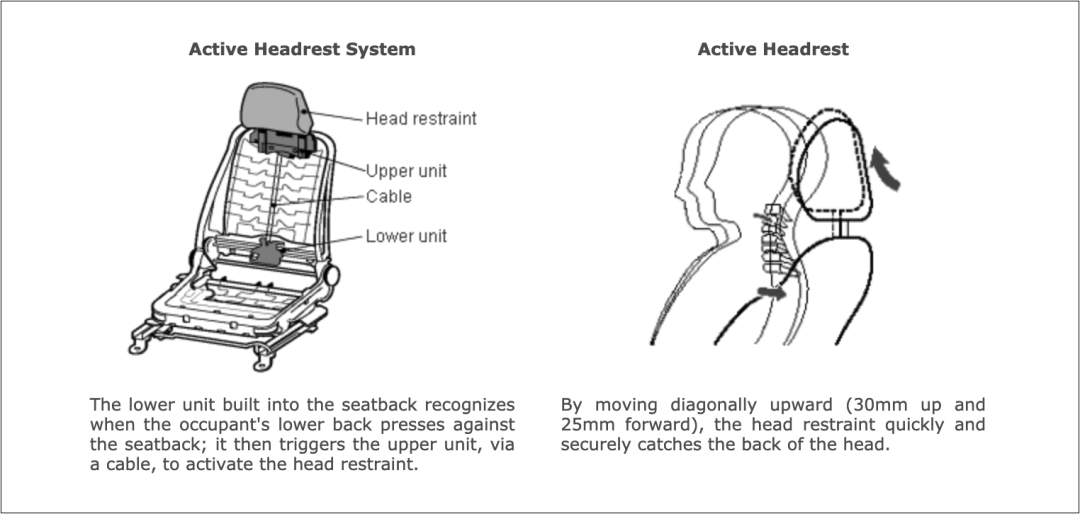
Volvo’s unique WHIPS (Whiplash Protection System) head-neck protection system is implemented inside the seat back rather than through active design on the headrest. When the vehicle experiences a severe forward impact, the connection structure between the seat back and the cushion will disconnect and slide into a fixed position with a greater backrest angle, effectively increasing the angle of the seat back in a moment.
This is another way of thinking to prevent the head (relative to the body) from moving backward. We can either use the headrest to support the head or allow the back * (trunk) * to move backward in advance compared to the head. These two ideas correspond to two methods of reducing the whiplash effect: 1. reducing the freedom of the head’s backward and upward movement; 2. releasing the restraint of the back * (trunk) * ‘s backward movement.
Volvo has more accurate research results. WHIPS has reduced the short-term neck condition after car accidents by 33% and long-term conditions lasting over a year by 54%. For women, the reduction rate will also increase to 50% and 75%.
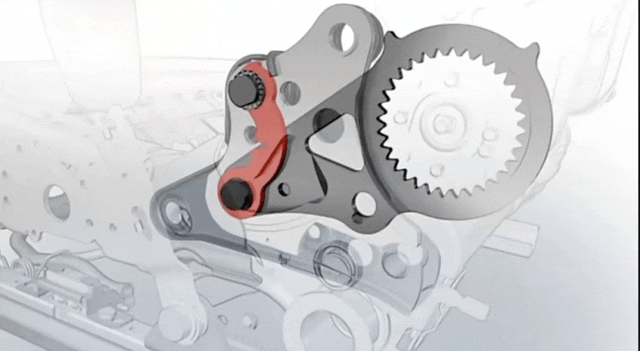
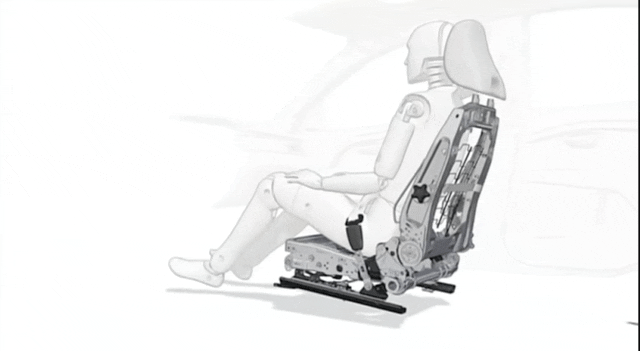
In summary:
First, do not install any type of neck pillow on the car seat, and discard it if there is any.
Second, for the original headrest with additional soft pillows, keep them in the original factory position without moving.
Third, for the headrest with additional soft pillows installed later, try to choose thinner pillows (to reduce the distance between the head and the real headrest).Of course, it is not necessarily sacrificing comfort and ride quality for safety when it comes to car manufacturing. This applies to the overall automotive industry, not individual automakers. If a certain automaker cannot balance safety and comfort due to various factors such as cost, market position, special purpose, or design level, then prioritizing safety over comfort (rather than sacrificing safety for comfort) is at least a conscientious (and regulatory) choice.
There are so many car models on the market, some of which are able to balance safety and comfort relatively well, while others must sacrifice comfort in order to prioritize safety. How to ensure safety while maximizing (which originally conflicts with safety) comfort is also a challenge for automakers’ engineering design capabilities.
You can even see it in the small soft pillow of Maybach.
This article is a translation by ChatGPT of a Chinese report from 42HOW. If you have any questions about it, please email bd@42how.com.